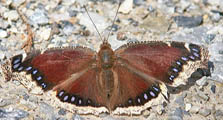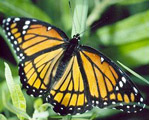Native Plants
Search for native plants by scientific name, common name or family. If you are not sure what you are looking for, try the Combination Search or our Recommended Species lists.
Salix amygdaloides
Salix amygdaloides Andersson
Peachleaf Willow, Peach-leaf Willow, Almond-leaf Willow, Almond Willow, Peach Willow, Southwestern Peach Willow, Wright Willow, Wright Peachleaf Willow
Salicaceae (Willow Family)
Synonym(s): Salix amygdaloides var. wrightii, Salix nigra var. amygdaloides, Salix nigra var. wrightii, Salix wrightii
USDA Symbol: SAAM2
USDA Native Status: L48 (N), CAN (N)
Peach-leaf willow is a medium-sized, multi-trunked tree, 35-60 ft. tall, with fine-textured, slightly weeping branching and orange-yellow twigs. Catkins appear before leaf emergence. The narrow, yellow-green foliage has insignificant fall color. Tree with 1 or sometimes several straight trunks, upright branches, and spreading crown.
This is the common willow across the northern plains, where it is important in protecting riverbanks from erosion. Both common and scientific names refer to the leaf shape, which suggests that of Peach.
From the Image Gallery
No images of this plant
Plant Characteristics
Duration: PerennialHabit: Tree
Leaf Retention: Deciduous
Leaf Arrangement: Alternate
Leaf Complexity: Simple
Breeding System: Flowers Unisexual , Dioecious
Fruit Type: Capsule
Size Notes: Up to about 60 feet tall.
Leaf: Green
Fruit: Red
Bloom Information
Bloom Color: Yellow , GreenBloom Time: Apr , May , Jun
Distribution
USA: AZ , CO , IA , ID , IL , IN , KS , KY , MI , MN , MO , MT , ND , NE , NM , NV , NY , OH , OK , OR , PA , SD , TX , UT , WA , WI , WYCanada: AB , MB , NL , NT , ON , PE , QC , SK , YT
Native Distribution: NY to c. MI, WI & s.e. B.C., s. to n. OH, n. IN, MO, NM, Apache Co., AZ & c. WA
Native Habitat: Low, wet, open woods; edges of streams & sloughs
Growing Conditions
Water Use: HighLight Requirement: Sun , Part Shade , Shade
Soil Moisture: Moist , Wet
Soil pH: Circumneutral (pH 6.8-7.2)
CaCO3 Tolerance: Medium
Soil Description: Wet or damp soils. Limestone-based, Sandy Sandy Loam, Medium Loam Clay Loam, Clay.
Conditions Comments: Short-lived and fast-growing. Susceptible to insect, disease, and wind damage.
Benefit
Use Ornamental: Fast growing, Attractive, Shade treeUse Wildlife: Nesting site, Nesting material, Seeds-granivorous birds. Early season harvest for birds and mammals.
Attracts: Butterflies
Larval Host: Mourning Cloak, Viceroy.
Value to Beneficial Insects
Special Value to Native BeesSpecial Value to Bumble Bees
Special Value to Honey Bees
Supports Conservation Biological Control
This information was provided by the Pollinator Program at The Xerces Society for Invertebrate Conservation.
Butterflies and Moths of North America (BAMONA)
|
Mourning Cloak (Nymphalis antiopa)  Larval Host |
Viceroy (Limenitis archippus)  Larval Host |
National Wetland Indicator Status
| Region: | AGCP | AK | AW | CB | EMP | GP | HI | MW | NCNE | WMVE |
| Status: | FACW | FACW | FACW | FACW | FACW | FACW | FACW |
From the National Organizations Directory
According to the species list provided by Affiliate Organizations, this plant is on display at the following locations:Texas Parks and Wildlife Department - Austin, TX
Bibliography
Bibref 1186 - Field Guide to Moths of Eastern North America (2005) Covell, C.V., Jr.Bibref 298 - Field Guide to Texas Trees (1999) Simpson, B.J.
Bibref 1185 - Field Guide to Western Butterflies (Peterson Field Guides) (1999) Opler, P.A. and A.B. Wright
Search More Titles in Bibliography
Web Reference
Webref 3 - Flora of North America (2014) Missouri Botanical Garden, St. Louis, MO & Harvard University Herbaria, Cambridge, MA.Additional resources
USDA: Find Salix amygdaloides in USDA PlantsFNA: Find Salix amygdaloides in the Flora of North America (if available)
Google: Search Google for Salix amygdaloides
Metadata
Record Modified: 2022-09-26Research By: TWC Staff